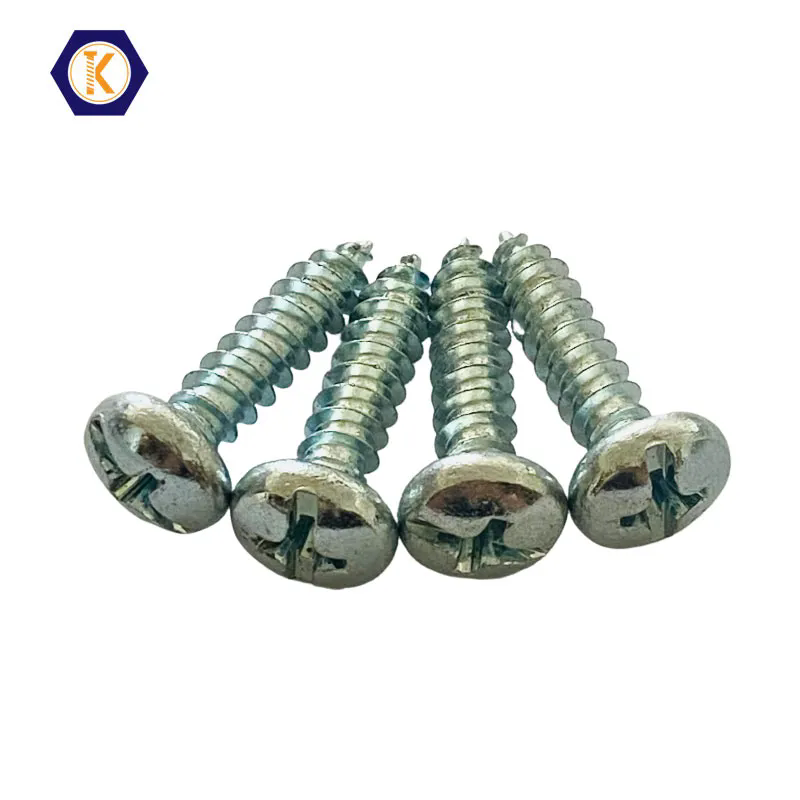The Versatile World of Self-Tapping Screws: A Comprehensive Guide
2024-10-18
When it comes to fastening materials, self-tapping screws are among the most practical and efficient solutions available today. With their unique design and versatility, these screws have become a staple in various industries, from construction to automotive to DIY projects. In this blog, we will explore the features, benefits, applications, and tips for using self-tapping screws effectively.
What are Self-Tapping Screws?
Self-tapping screws are designed to create their own threads when driven into materials, eliminating the need for pre-drilled holes. This innovative feature makes them ideal for fastening materials where traditional screws may struggle. The screw’s unique tip design allows it to cut through materials, forming threads as it is inserted, making it a favorite among builders and craftsmen.
Types of Self-Tapping Screws
Self-tapping screws come in various types, each suited for different applications:
1. Thread-Cutting Screws:
- These screws are designed with sharp threads that cut through material to create a female thread. They are typically used in softer materials like wood, plastic, and thin metal.
2. Thread-Forming Screws:
- Unlike thread-cutting screws, thread-forming screws displace the material to create threads rather than cutting through it. They are ideal for use in tougher materials like metals, as they provide strong holding power without compromising the integrity of the material.
3. Self-Drilling Screws:
- Self-drilling screws feature a drill bit-like point that allows them to penetrate materials without the need for a pilot hole. They are often used in metal-to-metal applications and are available in various sizes and coatings.
Benefits of Self-Tapping Screws
1. Time-Saving:
- One of the primary advantages of self-tapping screws is their ability to eliminate the need for pre-drilling holes. This not only speeds up the installation process but also reduces labor costs, making them a preferred choice for professionals and DIY enthusiasts alike.
2. Versatility:
- Self-tapping screws can be used in a wide range of materials, including wood, metal, plastic, and composite materials. This versatility makes them suitable for various applications, from furniture assembly to construction projects.
3. Strong Hold:
- When properly installed, self-tapping screws provide a strong and reliable hold, thanks to their ability to create secure threads in the material. This ensures that the fastened components remain firmly in place.
4. Reduced Risk of Damage:
- Because self-tapping screws create their own threads, there is less risk of splitting or cracking the material compared to traditional screws that require pre-drilling.
5. Easy Removal:
- Self-tapping screws can be easily removed if necessary, allowing for adjustments or repairs without damaging the surrounding material.
Applications of Self-Tapping Screws
Self-tapping screws are used across various industries and applications, including:
- Construction:
Used for fastening drywall, metal framing, and roofing materials, self-tapping screws provide reliable connections in structural applications.
- Automotive:
In the automotive industry, self-tapping screws are commonly used for assembling parts, fastening panels, and securing components.
- Electronics:
These screws are often used in electronic enclosures and assemblies, where quick and secure fastening is essential.
- Furniture Assembly:
Self-tapping screws are ideal for assembling furniture, providing a strong hold while simplifying the construction process.
- Home Improvement:
DIY enthusiasts frequently use self-tapping screws for a variety of home improvement projects, from installing shelves to building outdoor structures.
Tips for Using Self-Tapping Screws
1. Choose the Right Type:
- Select the appropriate type of self-tapping screw based on the material you are working with. Ensure that the screw is suitable for the thickness and density of the material.
2. Use the Correct Driver:
- Use a compatible screwdriver or drill bit to ensure a proper fit and avoid damaging the screw head during installation.
3. Pre-Drilling for Tough Materials:
- While self-tapping screws eliminate the need for pilot holes in many cases, pre-drilling a small pilot hole can help reduce resistance and ensure a smoother installation, especially in harder materials.
4. Avoid Over-Tightening:
- Be cautious not to over-tighten the screws, as this can strip the threads and weaken the connection.
5. Test on Scrap Material:
- If you are unfamiliar with using self-tapping screws, consider testing on scrap material first to get a feel for the installation process.
Conclusion
Self-tapping screws are a versatile and efficient fastening solution that offers numerous benefits across various applications. Their unique design allows for quick and secure installation in a wide range of materials, making them a favorite among professionals and DIY enthusiasts alike.
By understanding the different types of self-tapping screws and how to use them effectively, you can enhance your projects’ quality and efficiency. Whether you’re building furniture, working on automotive repairs, or tackling home improvement tasks, self-tapping screws are an invaluable tool in your toolkit.



